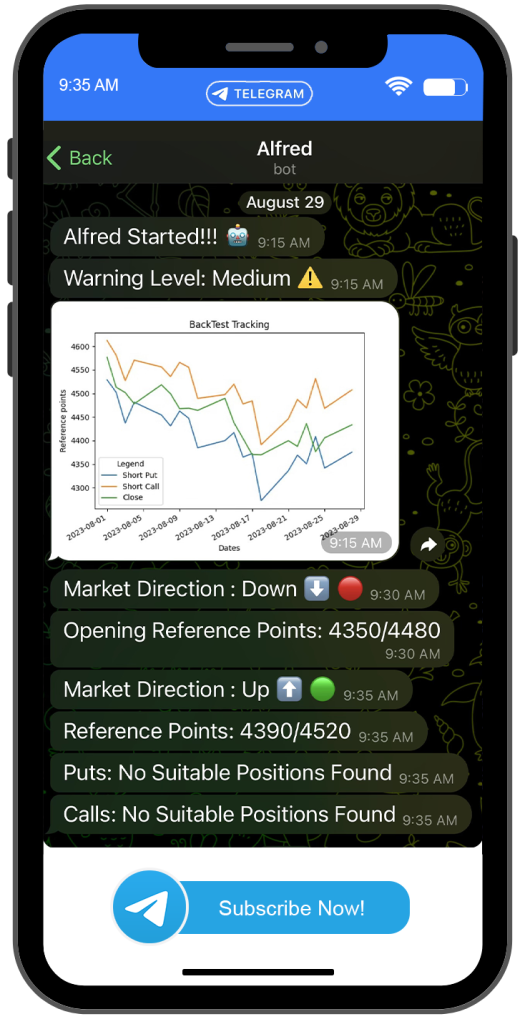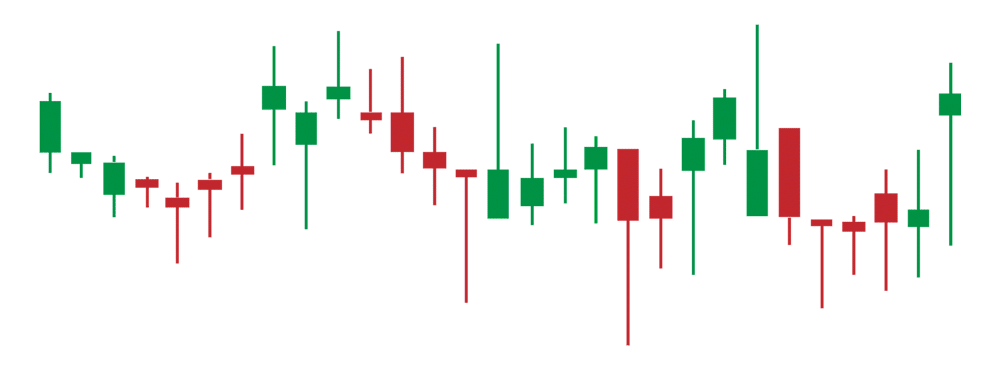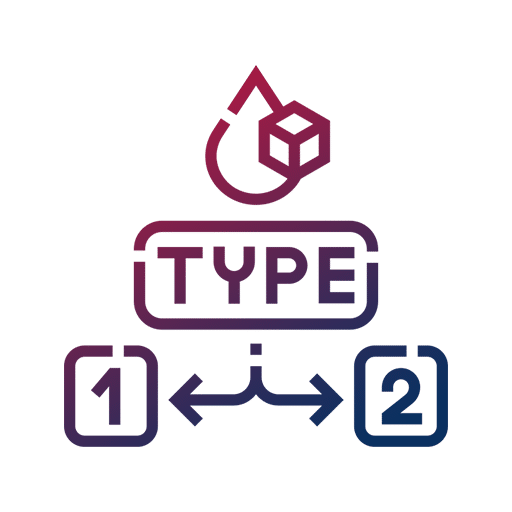

What are Options

What are Options
Options are financial instruments that give its holder, also known as the buyer, the right to purchase or sell the underlying asset specified in the contract at the stated strike price on or before its expiry date. On the other hand, the option writer (or seller) has the obligation to purchase or sell the specified asset at the strike price.
Both buyers (option holders) and sellers (option writers) get something out of this arrangement. The option seller undertakes the obligation to fulfill the terms of the contract in exchange for earning the premium paid for it. On the other hand, the option buyer pays the premium in exchange for the right that may earn them a profit before it expires on the specified date.
What are the Key Elements of an Option Contract

Underlying asset
This refers to the asset being exchanged if the option is exercised

Contract size
This is the amount of the underlying asset that one option contract represents

Type
This indicates whether the option contract is a call or put option.

Strike Price
This refers to the price at which the asset can be bought or sold before the option contract expires.

Expiration date
This is the date when the holder’s right to exercise the option contract expires.

Exercise style
This refers to when the option can be exercised. There are two exercise styles - American and European. European style options can only be exercised on the expiry date while American style options can be exercised on or before the expiry date.

Settlement style
This refers to how the underlying asset will change hands upon exercise by the option holder. There are two ways to settle an option contract - physical settlement and cash settlement. A physical settlement involves the delivery of the underlying assets between the holder and the writer. On the other hand, cash settlement involves a cash transfer of the price difference between the strike price and the underlying asset.
Calls vs. Puts - The Basics
The Different Kinds of Options

Call options
A call option grants its holder the right to buy the underlying asset at the strike price on or before the contract expires. Call option holders earn a profit when the market price of the underlying asset rises above the specified strike price. This kind of option is often utilized by investors who anticipate an upward movement in the underlying asset’s market price.

Put options
A put option grants its holder the right to sell the underlying asset at the strike price on or before the expiration date of the contract. Put option holders earn from their position when the underlying asset’s market price falls below the strike price specified. Investors use put option contracts when they see an asset having a downward movement for its market price in the near future.

Using Call and Put Options in
Your Trading Strategy
A long call option is a position wherein you purchase a call option. This is done when you anticipate an increase in the price of the underlying and you hope to profit from the rise of its market price.
When the market price upon exercise of the option is above the strike price, you will profit from the position, which is equivalent to the difference between the market price during exercise and the strike price minus the option premium paid. On the other hand, if you choose not to exercise the option, your losses are limited to the premium paid for the long call option contract.
A short call option involves writing and selling a call option. This position is made in the hopes of the underlying asset’s market price remaining at or below the strike price until the expiration date. A short call option is profitable when the option holder does not exercise their right to purchase the underlying asset.
Your profits are limited to the premium you received for writing and selling the call option. On the other hand, since the underlying asset’s price does not have a ceiling, your potential losses are potentially unlimited, which is equal to the difference between the strike price and the market price upon exercise minus the premiums paid to you by the holder.
A long put option involves purchasing a put option. This position is made when you see a decrease in the underlying asset’s market price before the contract’s expiration date. You earn a profit from exercising your right to sell the asset when the market price goes below the strike price.
Your profit from a long put option is equal to the difference between the market price during the exercise of the option and the strike price minus the premium paid to purchase the put option. On the other hand, as long as you don’t exercise your right to sell the underlying asset, your losses from a long put option are limited to the premium you paid.
A short put option is when you sell a put option to another trader. In this position, you are hoping the market price of the underlying asset remains at or above the strike price on or before the expiration date. You earn a profit from a short put option when the holder does not exercise their right to sell the underlying asset.
The maximum profit you can earn from a short put option is the premium you received from selling the contract. As for potential losses, they can be substantial since the underlying asset’s market price can go down to zero.
The different positions above are used by the various options trading strategies out there. Once you understand these, you can easily understand the strategies that you will encounter in pursuing further learning about options trading.
How All American Group’s Algorithm-Based Strategies and Alerts
Can Help You Choose Between Calls vs. Puts
Knowing when to use calls vs. puts in your options trading strategy allows you to capitalize on the price movements of an asset, index, or stock in the market. This can be through targeting potential profits by purchasing or selling options, or as a hedge against market downturns for the price of an asset you own.
With our algorithm-based options strategies and alerts, All American Group can guide you through the complexities of trading SPX options and navigate the choice between calls and puts. It does not matter if you are a beginner or a seasoned trader. Our platform equips investors with timely insights and recommendations for put and call options reference points and entry and exit trading alerts.
What Our Algorithm-Based Trading Strategy and Alert Service Can Offer
- Market direction alerts
- Notification on put and call reference points
- Short and long leg position notification
- Warning levels for low, medium, high, and critical volatilities
- Exit notifications


Start Your 14-Day Free Trial Today!
Elevate your trading experience by saving time on market analysis and following an algorithm-based trading strategy with a 93 percent profitability.
Don’t miss out on this opportunity to improve your returns and consistency from trading SPX options. Start your 14-day free trial of our algorithm Alfred today and begin trading with more confidence and peace of mind!
Frequently Asked Questions
Buying call or put options involves anticipation of the underlying asset’s price movement in the future. This is done for one or more of the following reasons:
- Income generation
Buying a call or put option is done in anticipation of the increase or decrease of the underlying asset’s price. The option grants you the right to buy (call) or sell (put) the asset at the strike price if the market price hits above (call) or below (put) it. This grants you a profit from the difference between the payoff from the transaction and the premium paid. - Leverage and Cost Efficiency
Buying call or put options allows you to have a larger position of the underlying asset with a relatively smaller investment (in the form of premiums) when compared to actually buying and gaining ownership of the said asset. This allows you to preserve your trading capital and use it for more positions to increase your profits or manage your risks. - Strategic Flexibility for Bearish Trends
Put options allow more flexibility in speculating downtrends in the market price of an asset. Although you can short stocks to take advantage of potential downtrends in the market price, options do not have a high margin requirement, and not all stock brokers will allow an investor to short a stock. - Higher Potential Profits
Although you will not own any assets before the sale, premiums will always cost less than buying or shorting an asset by a significant amount. As a result, you have higher potential profits when the market price hits below (put) or above (call) the strike price. - Less Risk When Used Properly
Call and put options offer less risk for investors of their lower financial requirements than buying and owning the asset. And, put options allow you to hedge against potential downturns in the market price of a stock you own.
The decision between a call or a put option is affected by whether the market price of the asset concerned is forecasted to increase or decrease. When there is a bullish forecast on the price of the asset, buying a call option is the best decision since it will allow you to exercise the contract when the market price goes above the strike price on or before expiration. On the other hand, when you are bearish with the price of the asset, it is best to buy a put option so that you can profit from the eventual decrease of the market price and when it goes below the strike price.
Both call and put options are at risk for changes in their implied volatility, which is the forecast for the likely movement of the underlying asset’s market price. If a new forecast sees changes in the direction of the asset’s future price, any options you purchased before the news came out are likely to not be as profitable before your expiry date. At worst, you may choose not to exercise the option and write the premiums you have paid for the contract as a loss.
Also, the call and put options you hold are subject to time decay risk. As the expiry date approaches, the value of the option decreases and increases the risk of your investment becoming worthless.
On the other hand, if you are positioned as a seller of a put or call option, you carry the risk of carrying out the obligation of fulfilling the terms of the contract should the holder exercise their right. This can lead to significant losses from your trading capital since you will have to deliver the asset or cash at the specified strike price.
The expiry date of your option will affect the best call and put strategies for your situation. Some option trading strategies are sensitive to time decay and a shorter duration before the option expiration will increase the risk of your position. And, a shorter duration before an option’s expiry date requires the use of strategies with closed positions to decrease your investment’s sensitivity to adverse price movements and unfavorable changes in market conditions as the expiration comes closer.
Yes, you can combine call or put options for various hedging strategies to manage the risk exposure of your portfolio and protect it from declining price movements. Here are some of the common hedging strategies that make use of call and put options:
- Married Put
This aims to protect a long stock position against a potential decline in its market price. The stock and put option are purchased at the same time with the strike price for the contract equivalent to the current market price of the asset. If the stock price falls, the investor can exercise their put option and sell the stock from the contract at the strike price, limiting their losses from the stock they originally held. On the other hand, if the stock price increases, the premium they paid for the put option can be covered by the profit. - Covered Call
A covered call generates income from an existing stock position through premiums and protects from the risk of a downturn for its price. This is done when the investor expects to hold the underlying stock for a considerable length of time but does not expect a significant market price increase in the near term that will let them profit from the position.To execute a covered call, the investor sells a call option for the same asset they are holding a long position with a strike price. As long as the strike price is set right, this strategy allows the investor to profit from unexpected increases in the market price and the premium paid by the option holder. And, if the stock maintains or declines in market price, the premium they receive for the option earns them an income or reduces their risk from the unrealized loss. - Collar
This is an options strategy that protects an investment in a long stock position from large losses. It is also used for stock positions with great long-term profit potential but has high downside risk in the short term due to a rapid market value increase recently and potential depreciation due to incoming news about mergers and acquisitions.A collar option strategy is achieved by combining a married put option and a covered call option on the same underlying asset. The married put option neutralizes the effects of a falling stock price while the premiums from the covered call option pay for purchasing the protective put option. - Long Straddle
This is an options strategy that aims to profit from significant price movements in either direction. This involves purchasing a call and put option for an underlying asset with the same expiration date and strike price. A substantial price movement allows the profit from the winning side to offset the cost of the premium on the losing side. - Long Strangle
This is similar to the long straddle but with lower upfront costs. This strategy is achieved by purchasing an out-of-the-money call option and an out-of-the-money put option. The call option strike price is above the market price of the underlying asset while the one for the put option is below. This setup offers significant profitability since the call option has theoretically unlimited upside while the put option can profit in the event of a downturn.
- Married Put
We have designed our algorithm-based platform for trading SPX options with beginners in mind. Our user-friendly platform provides comprehensive guides, including the one above, enabling them to gain a clear understanding of the fundamental concepts of call vs. put options. We also explain how vertical put and call spreads, which is the strategy that our algorithm, Alfred, uses to provide valuable trading insights that can help you profit from the market movements of the S&P 500 Index (SPX).
And, if you find yourself seeking more information or have additional questions, you can contact us through email at info@allamericangroup.com. Our support team is ready and available to provide assistance and answer your questions so that you can navigate the world of call and put options confidently.
All American Group’s algorithm uses a vertical spread options strategy for its call vs. put options in the S&P 500 Index (SPX). A vertical spread options strategy involves buying and selling an option of the same type with different strike prices. Here are the different types of vertical spreads that you can execute in trading SPX options:
- Bull call spread – This involves purchasing a call option, and simultaneously selling a call option for the same underlying asset, with the same expiration but a higher strike price. The maximum loss for this position is the net premium paid for the position while the maximum profit is the difference in the strike price of the calls minus the net premium for the position.
- Bear call spread – This position involves writing a call option while simultaneously buying another one with the same expiration date but a higher strike price. The maximum gain for a bear call spread is the net premium received for the position while the maximum loss is the difference in the strike price of the calls less the net premium.
- Bull put spread – A bull put spread involves selling a put option, and simultaneously purchasing another one with the same expiration date but a lower strike price. The maximum gain for this position is equivalent to the net premium you receive for the position while the maximum loss is the difference in the strike prices of the puts minus the net premium received.
- Bear put spread – A bear put spread is the purchase of a put option while simultaneously selling another one with the same expiration date but a lower strike price. The maximum loss is the net premium paid for the position and the maximum profit is the difference in the strike price minus the net premium paid.
Our algorithm takes on positions that involve selling put vertical spreads (bull put spreads) or call vertical spreads (bear call spreads), or both, with the strike prices outside the estimated closing range for the day. If the algorithm sees there’s too much risk and no positions are viable for the day, it will choose to sit out trading for the day rather than have a bad trade.
When the SPX stays within the estimated range, the spreads will expire worthless allowing you to profit from the premiums you received from the now worthless options. On the other hand, if the market price reaches or goes beyond the strike price, losses are offset by the premiums you received from selling the option contracts.
Yes, it can. You will receive the first alert before SPX trading hours begin for the day (at 9:14 AM Eastern Time) in our Alfred Basic subscription plan. The alert will notify you if the algorithm sees an opportunity for a profit with manageable risks and decides to trade later in the day. At 9:30 AM, you will receive the next notification, which contains the market direction and initial reference points for puts and calls. After 5 minutes, the algorithm will analyze the market to verify the market direction and reference points before sending out the notification for the short and long leg of the position and net credit for the trade.
Our algorithm follows an option trading strategy designed for low to moderate volatility, which helps manage your risk exposure in the S&P 500 Index. It also determines first thing before the trading session starts if it’s worthwhile to trade for the day given the profitability and risks for the day, which is verified a few minutes into the session.
Moreover, our Alfred Premium subscription plan provides warning-level graphs that gauge the current volatility of the market. And, if any market changes occur that risk the current position for a loss, our algorithm analyzes the market in 1-second intervals to ensure that it does not exit the trade too soon but still prevents or reduces the potential loss.
However, keep in mind that our risk management measures do not eliminate the risk of trading SPX options. Your trading capital is still at risk due to the natural risk from trading options and the speed of market changes and movements. And, if you can’t keep an eye on your trades for the day, it might be best to sit out the day and come back to trading when you have the time.
Our algorithm has been designed and tested for a particular options trading strategy. It is not possible to customize it according to individual risk tolerances. However, our options trading strategy has manageable risk given that it is for market movements with low to moderate volatility. If the market is too volatile for the strategy, our algorithm will choose not to trade for the day.
We cannot disclose any information about our users for the sake of personal and financial privacy. However, you can check the profitability of our algorithm Alfred by clicking this link.
You will see on the page that All American Group’s algorithm has 93% of its trades turning out a profit since its inception in 2020. It has also maintained strong Sharpe ratios, which indicates a low-risk profile with a high success rate. Its returns throughout the years are 108.3% for 2020, 255.02% for 2021, and 73.7% for 2022.
Do You Have Any More Questions?
We will gladly answer them. You can dive into our page for frequently asked questions to find the answer to the one you want to ask. You can also contact us if you don’t find the answer that you are looking for through our email at info@allamericangroup or through our contact page.
Whether you are a beginner or an experienced trader, our team is here ready to help you and guide you through every step of using our best options trading platform.
TRY OUT OUR
ALGORITHM FOR 14 DAYS!
Ready to improve your profitability and consistency trading SPX options? Start your 14-day free trial of our algorithm-based options trading strategy and alert subscription service! With Alfred, you can take advantage of our algorithm-driven options trading strategy, receive real-time alerts, get calls vs. puts reference points, and receive notifications for market direction, warning notifications, and exit alerts.
Don’t miss out on this opportunity to enhance your trading experience! Sign up today for your 14-day FREE TRIAL and unlock a world of possibilities with SPX options trading that only institution-based traders can access.


